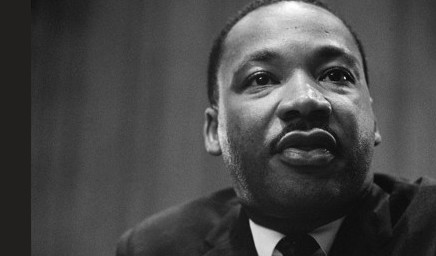Can you recite the five central freedoms protected by the First Amendment?
No? Well, you’re not alone.
A recent study by the First Amendment Center at Vanderbilt University revealed that just over half the people surveyed knew that our First Amendment protects freedom of speech, under 25% knew that it protects freedom of religion, under 20% knew that it protects freedom of the press, 14% knew that it protects freedom of association and only 6% knew that it protects the right to petition the government about grievances.
Another survey conducted by the Annenberg Public Policy Center found that 37% of Americans could not even name one right protected under the First Amendment. Back in 2006, one in four Americans could correctly name one, but more than half could name at least two members of the cartoon family, The Simpsons.
Ironically, according to an August 2017 telephone survey, 73% of Americans think the right to free speech is worth dying for. Clearly, there’s a disconnect between being willing to die for something and not knowing what it is you’re willing to die for–time to bridge that gap. You can’t properly exercise, let alone protect, your rights if you don’t know what they are.
The First Amendment to the Constitution was adapted into the Bill of Rights in 1791. Here it is:
Congress shall make no law respecting an establishment of religion, or prohibiting the free exercise thereof; or abridging the freedom of speech, or of the press; or the right of the people peaceably to assemble, and to petition the government for a redress of grievances.
In other words, The First Amendment guarantees freedoms relating to religion, expression (speech and press), assembly, and petition.
Freedom of Expression
Self-proclaimed white supremacists marching down the streets of Charlottesville chanting “Jews will not replace us,” were exercising their First Amendment right to expression. When Donald Trump stated that there is “No collusion between Trump and Russia” or that “Black homeownership just hit the highest level it has ever been in the history of our country,” he was also exercising his First Amendment rights. Speech doesn’t have to be true to be protected. Many lies, intentional or not, are protected by the First Amendment, though there are exceptions in cases of libel or defamation of character. Other examples of speech not protected by the First Amendment are:
ObscenityFighting wordsDefamationChild pornographyPerjuryBlackmailIncitement to imminent lawless actionTrue threatsSolicitations to commit crimesPlagiarism of copyrighted material
Freedom of Speech
The First Amendment right to free speech is at the center of the national debate about our rights on social media. Is blocking an individual on Twitter or removing unflattering comments (as President Trump has done) a violation of one’s right to freedom of speech? Is there even a right to free speech on social media platforms that are owned by private corporations? As reported by Lincoln Caplan in the 10/11/17 issue of Wired, The Knight First Amendment Institute sued President Trump to force him to unblock the people he had blocked. The Institute argued that the President had violated users’ rights to free speech because he only blocked people who disagreed with him.
Freedom of Religion
When the Alabama State Supreme Court ruled that then Judge Roy Moore had to remove the 10 Commandments from his courtroom, they were protecting our First Amendment right stating that “government shall make no law respecting the establishment of religion.” Because Roy Moore posted the 10 Commandments in his role as a public servant and not as a private citizen, declaring his personal views were a violation of the First Amendment and not an expression of his First Amendment rights.
Freedom of Assembly and Petition
A recent debate is centered around whether or not environmental protesters’ First Amendment rights were violated when they were forcibly removed from the Keystone Pipeline in North Dakota. According to Jennifer Cook, policy director of the ACLU of North Dakota, “The right to protest is fundamental to our democracy and the interference with that right by agents of the counties and the state of North Dakota violates both the spirit and letter of the First Amendment. As the courts in this state have recognized, the First Amendment forbids the enactment of laws ‘abridging the freedom of speech … or the right of the people peaceably to assemble.'” The protest at the Dakota Access pipeline is precisely the type of assembly protected by the First Amendment. Peaceful protest is at the core of the First Amendment and restrictions to such activity, such as the closing of highways with the effect of preventing assembly or effective messaging of protesters, should be viewed skeptically. Law enforcement agents have a duty to ensure that the rights of protesters are protected, not just the rights of corporations. While law enforcement officers have a right to ensure the safety of all of our citizens, this goal should be achieved by ensuring that all citizens, including protesters, are protected and that there are enough police in place to prevent violence, but not prevent peaceful protest or assembly.”
Applying the First Amendment to real-life situations is not always black and white. For example, law enforcement officials can put time, place, and manner restrictions on protests. Rules can vary from city to city, but law enforcement can require permits for large groups, for marches that black traffic, or for protests that will create a lot of noise. As with most situations relating to rights and laws, First Amendment principles are open and subject to interpretation. But as we watch debates about our freedom of speech and freedom of the press play out in real-time, it’s useful and necessary to know what it is that we are protecting.
- First Amendment ›
- freedom of press ›
- The five freedoms protected by the First Amendment – Liberty Project ›
- What does freedom really mean? – Liberty Project ›
- CNN Fights for Freedom of Speech and Due Process in Trump Lawsuit ›
- robert bowers pittsburgh shooting free speech – Liberty Project ›
- Top 5 Countries With the Most Freedom – Liberty Project ›





